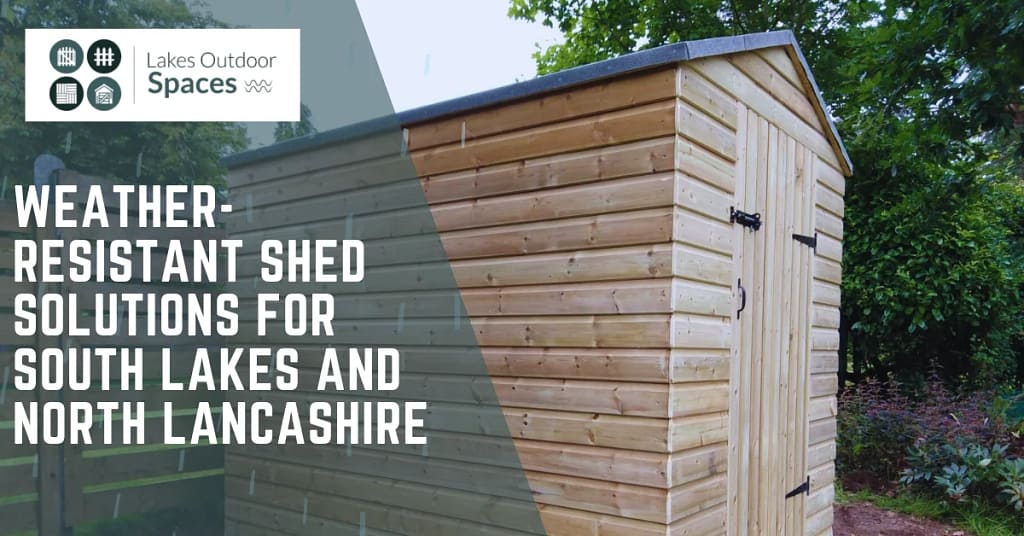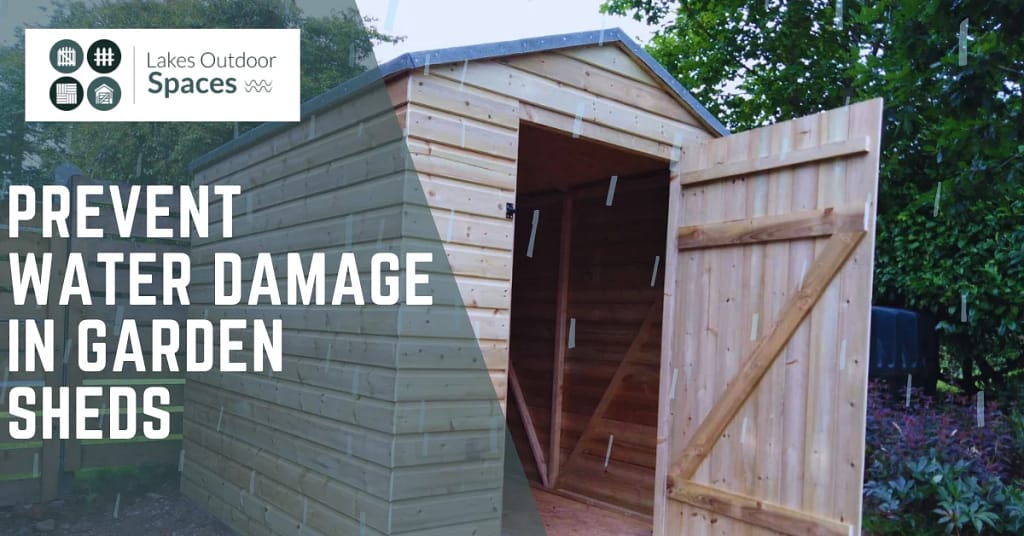In the wet and often unpredictable climate of South Lakes and North Lancashire, a garden shed can be vulnerable to the elements. Whether you’re storing gardening tools, hobby equipment, or simply using the shed for extra storage, it’s crucial to ensure your shed is waterproof and protected from the rain, damp, and humidity typical of these regions. Waterproofing your garden shed in South Lakes and North Lancashire is essential for preventing water damage, mould, and rot, which can degrade both the structure and contents of your shed. Let’s explore effective ways to ensure your shed remains weather-resistant and in great shape all year round.
The Importance of Waterproofing Your Garden Shed
When it comes to garden shed maintenance, one of the most important aspects is protecting it from the damaging effects of water. Water can seep into your shed through cracks, gaps, and unsealed areas, leading to mould growth, wood rot, and rusting of metal parts. If your shed is made of wood, it’s especially susceptible to moisture-related damage. Waterproofing not only helps maintain the shed’s structural integrity but also ensures that your tools, gardening supplies, and other stored items stay dry and safe.
Shed Maintenance: Regular Care for Longevity
Shed maintenance is essential for long-term protection against the elements. Regular checks will help you identify any potential issues, such as leaks, gaps, or cracked seals. If you notice any dampness, it’s crucial to address it quickly to prevent more severe damage.
- Inspect the Roof and Walls: Check for any signs of wear, cracks, or holes. These can quickly let in water and cause damage.
- Ensure Proper Drainage: The ground around your shed should slope away from it. If water collects around the base, it can seep into the shed and cause significant damage.
- Clean Gutters Regularly: If your shed has gutters, make sure they are free of debris to prevent water buildup on the roof.
Weather-Resistant Shed Solutions for South Lakes and North Lancashire

Given the frequent rainfall in these areas, you need to focus on making your shed weather-resistant. Here are some strategies:
- Waterproof Coating for Sheds: Applying a high-quality waterproof sealant to the roof and walls can provide a first line of defence. Be sure to choose a garden shed sealant designed for outdoor use, as this will prevent water from penetrating the surface.
- Shed Roof Repairs: The roof is one of the most vulnerable parts of any garden shed. Leaks can occur over time due to wear and tear. Repairing or replacing damaged roofing materials is critical for preventing water from entering the shed. Consider using roofing felt or corrugated plastic sheets, both of which offer excellent water resistance.
- Shed Painting for Waterproofing: Applying a weatherproof paint to the shed can offer a dual benefit: improving the appearance while adding a layer of protection against moisture. Look for paints specifically designed for wood or metal that offer waterproofing properties.
- Protect Shed Wood from Moisture: Wooden sheds are particularly susceptible to rot and decay when exposed to excessive moisture. Treat the wood with a wood preservative or a water-repellent solution to prevent the wood from soaking up moisture.
Prevent Water Damage in Garden Sheds: Top Tips

Water damage is one of the leading causes of shed deterioration, but you can prevent it with some simple steps.
- Shed Insulation: While insulation is usually associated with indoor spaces, it can also benefit your garden shed. Insulating the walls and roof can help maintain a stable internal temperature, reducing the chances of condensation forming on the walls. This is particularly important during the colder months when moisture is likely to build up inside.
- Shed Protection from Damp: Installing a vapour barrier on the floor of your shed is an effective way to prevent dampness from rising into the shed. Additionally, placing moisture-absorbing products, like silica gel or dehumidifiers, inside your shed can help reduce humidity levels and prevent the growth of mould.
- Ventilation: Good ventilation is a key factor in preventing excess moisture buildup inside your shed. Installing vents or windows can help keep air circulating and reduce humidity levels inside. This simple measure can significantly decrease the likelihood of mould and mildew growth.
How to Waterproof Your Shed: Step-by-Step Guide
If you’re a DIY enthusiast and want to tackle waterproofing your garden shed yourself, follow these steps for a weather-resistant shed:
- Clean the Shed Thoroughly: Before you begin any waterproofing, make sure the shed is free of dirt, mould, and debris. Use a pressure washer to clean the walls and roof.
- Inspect for Gaps and Cracks: Carefully examine the walls and roof for any cracks, gaps, or holes. Use caulk or wood filler to seal up any small openings.
- Apply Garden Shed Sealant: Once the surface is dry and clean, apply a waterproof sealant or protective coating to the roof and walls. Follow the manufacturer’s instructions for the best results.
- Treat Wooden Surfaces: If your shed is made of wood, treat it with a water-resistant wood preservative. This will create a barrier to prevent moisture from soaking into the wood.
- Install a Vapour Barrier (Optional): If you’re concerned about moisture getting into the shed from the ground, consider installing a vapour barrier on the floor. This will help protect stored items and keep the shed dry.
- Maintain Regular Checks: After waterproofing your shed, make it a habit to check it regularly for signs of leaks or damage. Early detection can save you time and money on repairs.
Conclusion
Waterproofing your garden shed in South Lakes and North Lancashire is not just about preventing leaks; it’s about preserving your shed’s longevity and keeping your tools, equipment, and other items safe from moisture damage. Regular shed maintenance, weatherproofing solutions, and smart design choices can go a long way in ensuring your shed withstands the unpredictable weather conditions typical of the area.
By following the steps outlined above, you can keep your shed dry and protected throughout the year. If you’re not confident in doing it yourself, you can always contact local experts for assistance, like Lakes Outdoor Spaces, who can guide you on the best waterproofing solutions for your shed.
One response to “How to Waterproof Your Garden Shed in South Lakes and North Lancashire”
-
Making the waterproof garden shed is one of the hardest thing i found ever.


Leave a Reply